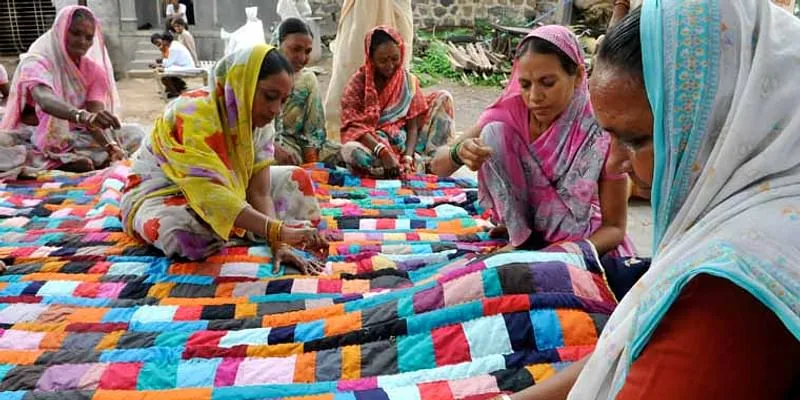India must put women and girls at the centre of its economic recovery plans: Report by IWWAGE and TQH
A report by The Quantum Hub (TQH) and the Initiative for What Works to Advance Women and Girls in the Economy (IWWAGE) at LEAD, has identified solutions and suggestions for a gender-responsive and inclusive economic recovery.
A recent report by The Quantum Hub (TQH) and the Initiative for What Works to Advance Women and Girls in the Economy (IWWAGE) at LEAD, has identified solutions and suggestions for a gender-responsive, inclusive, and just economic recovery for India in the COVID-19 context.
The recommendations presented in this paper have been informed by a series of expert consultations and roundtable discussions on various topics that were facilitated by Sattva Consulting.
The report discusses the severe and disproportionate impact of the COVID-19 pandemic and the subsequent lockdowns on vulnerable and marginal groups, specifically girls and women. Women in the labour force, concentrated in the informal sector, suffered heavy livelihood and income losses. Additionally, women have been forced to drop out of the labour market, primarily due to their increased unpaid domestic care responsibilities.
The paper by IWWAGE and TQH also analyses the state of gender budgeting in India, particular allocations made towards women and girls in the Union Budget 2021-22. The paper states that India still spends only a small fraction of its budget on programmes targeting nearly half its population, with allocations remaining below six percent of the total expenditure since India adopted the practice of gender budgeting in 2005.

Suggestions for a gender-responsive recovery
The study emphasises the need for a just and equitable economic recovery plan that is also gender-responsive.
Listed below are some suggestions:
Monetary policy
- Incentivise commercial banks to respond to the growing demand for credit by women borrowers, by revising Priority Sector Lending (PSL) targets and weightage of such lending in the Adjusted Net Bank Credit (ANBC). Revise models for assessing the creditworthiness of women, as assets are not generally in their name.
- Address the stress of the pandemic on women SHGs; the government may consider assisting in the repayment of outstanding loans for weaker SHG members and/or launch a scheme to bear the interest on loans.
- Scale-up the network of banking correspondents (third parties hired by banks to provide banking services even without a traditional brick-and-mortar setup) to ensure last-mile banking in rural areas with strong SHG networks.
Employment generation and skilling
- Filling vacancies and investing in areas of health and education, filling up positions of Anganwadi workers, ASHA workers, etc can create up to three million jobs, and improve female labour force participation.
- Allocations for the National Apprenticeship Promotion Scheme (NAPS) may be increased with specific incentives such as increased stipends for employers to take on female apprentices.
- Women-specific centres for upskilling and reskilling should be set up with adequate funding.
Procurement from women’s enterprises
- The government may consider strengthening systems to provide much-needed impetus to women entrepreneurs as the ecosystem, at present, is heavily skewed towards male entrepreneurs.
- The Ministry of MSME’s Public Procurement Policy (2018) mandates that every central ministry/department/PSUs should target 25 percent of their procurement from the micro and small enterprises (MSEs) sector, of which 3 percent must be from the women-owned MSEs. This can be increased.
- Incentivise the private sector to procure from women-owned businesses through tax breaks and subsidies. By enabling CSR norms, private enterprises should be encouraged to integrate women-led enterprises into the corporate value chain.
Social security for women
- Adequate and sustained Emergency Cash Transfers for women may be extended by the Government, to those who have been forced to drop out of the labour force. Beneficiaries can be identified through a composite list of beneficiaries from MGNREGA lists, ration cards, etc.
- Expand the PM-KISAN scheme through which transfers worth Rs 6,000 are made annually to landholding farmers to increase coverage among sharecroppers as well, with a focus on women who do not necessarily own landholdings.
- The PM Ujjwala Scheme should address issues of refilling, and the government may consider allowing access to more than one cylinder for women who run home-based businesses.
Investment in care-led recovery
- A post-pandemic recovery plan must ensure productive employment, decent working conditions, training and skill upgradation, career progression, and adequate remuneration for the care workforce.
- Launching awareness and advocacy campaigns to address gender norms regarding women’s roles and changing stereotypes.
- To enable a gender-responsive economic recovery and in order to increase investments in the care economy, the government can consider incentivising the private sector. Corporations can be offered tax holidays or other incentives if they have undertaken measures to ensure gender-equitable workplace policies such as the provision of onsite childcare, flexible work schedules, etc.
Gender-disaggregated data systems
- Developing and supporting statistical infrastructure, capabilities, and processes to consistently collect and disseminate sex-disaggregated COVID-19 related data in the country.
- Regular evaluations must be conducted of schemes to assess their impact on women, at scale. These should ideally inform any necessary modifications in the scheme, and encourage other states to replicate the successes of existing schemes.
- Ensure that gender data collection is agnostic of the domain; the requirement of sex-disaggregated data collection, standardisation, and dissemination should be cross-cutting across domains.
Additionally, the paper has also identified innovative financing options that governments in other countries have considered to address gender-equitable outcomes, but also improve spending in fiscally constrained environments. Some options include gender bonds, public-private partnerships, and blended finance.
These suggestions put forward by IWWAGE and TQH highlight the various ways in which the economy can be revitalised by concentrating on the financial and social upliftment of women and girls.
The report also acknowledged that while it might be difficult to implement these policies in a fiscally constrained environment, most of these measures are likely to result in increased income for women and higher economic activity and growth in the country. This, in turn, can generate additional tax revenue for the country in the medium to long term, thus improving spending on these fiscal measures.
Edited by Kanishk Singh








